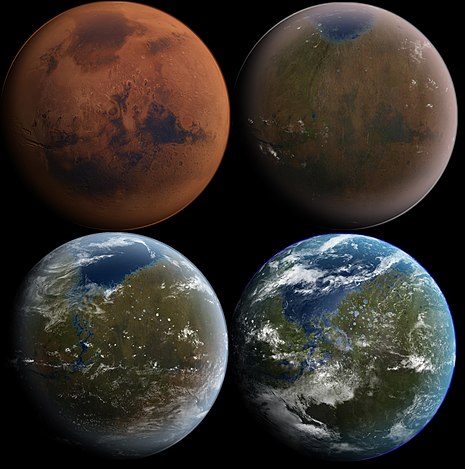The Future of Mars Colonization: How Dust Could Help Terraform the Red Planet
Terraforming Mars has long been a staple of science fiction, but recent research published in Science Advances suggests that the concept may not be as far-fetched as once thought. According to this new study, injecting tiny particles into Mars’s atmosphere could raise the planet’s temperature by over 10°C in just a few months—enough to potentially sustain liquid water. This groundbreaking idea could bring humanity one step closer to making Mars habitable.

The Challenge of Warming Mars
Mars is currently a cold and barren planet, with average temperatures hovering around –62ºC, far too frigid to support human life, liquid water, or agriculture. Though water is believed to have once flowed on Mars billions of years ago, what little remains today is trapped in polar ice caps or frozen beneath the soil. Warming the planet enough to support human civilization is a daunting challenge that requires innovative solutions.
A Greenhouse Effect on Mars?
Interestingly, the researchers believe that Mars could be warmed using a process similar to the one causing global warming on Earth: the greenhouse effect. Samaneh Ansari, a Ph.D. student at Northwestern University and the lead author of the study, explains that the goal is to artificially create a greenhouse on Mars. By finding a substance that, when introduced into the atmosphere, can trap heat much like carbon dioxide and water vapor do on Earth, scientists hope to significantly increase Mars’s surface temperature.
Previous proposals suggested the use of chlorofluorocarbons (CFCs)—the same compounds that once threatened Earth’s ozone layer. Another idea involved placing silica aerogel tiles on the Martian surface to trap heat and block harmful ultraviolet radiation. However, both approaches were deemed impractical due to the sheer cost and logistical challenges of transporting the required materials from Earth to Mars.
The Power of Martian Dust
Ansari and her team explored a new approach that leverages a resource Mars has in abundance: dust. Martian dust is rich in iron and aluminum, giving it its characteristic red color. However, the microscopic size and shape of Martian dust particles are not ideal for absorbing or reflecting radiation effectively.
To overcome this, the researchers proposed creating 9-micrometer-long rods from Martian dust. These rods, about twice the size of typical Martian dust particles, were designed to enhance their ability to trap heat. Simulations showed that these theoretical particles could absorb infrared radiation from the Martian surface and scatter it back, effectively creating a localized greenhouse effect.
Collaborators at the University of Chicago and the University of Central Florida then fed these particles into climate models of Mars. The results were astonishing: by injecting 2 million tons of these rods into the atmosphere annually, Mars could warm by 10°C within months. Remarkably, this method would require 5000 times less material than other proposed solutions. Since the raw materials for these rods are already present on Mars, they could be mined and manufactured on-site, eliminating the need for costly transport from Earth.
The Road Ahead
While raising Mars’s temperature is a crucial step toward making the planet habitable, it is only part of the equation. Mars’s atmosphere contains just 0.1% oxygen compared to 21% on Earth, and its pressure is so low that human blood would boil. Additionally, the planet lacks an ozone layer, leaving it vulnerable to the Sun’s harmful ultraviolet radiation. Even if the temperature is increased, Martian soils may still be too salty or toxic to support crops.
Despite these challenges, the researchers remain optimistic. They plan to manufacture and test their proposed nanorods in laboratory settings while exploring variations in size, shape, and composition. While the dream of terraforming Mars may still be far off, the research highlights the importance of understanding planetary climates, both on Mars and here on Earth.
Conclusion
The concept of terraforming Mars is evolving from the realm of science fiction to a potential scientific endeavor. By harnessing the power of Martian dust, researchers are inching closer to warming the Red Planet, a key step toward making it a future home for humanity. As this research progresses, it will undoubtedly provide invaluable insights into both planetary engineering and the delicate balance of Earth’s own ecosystems.